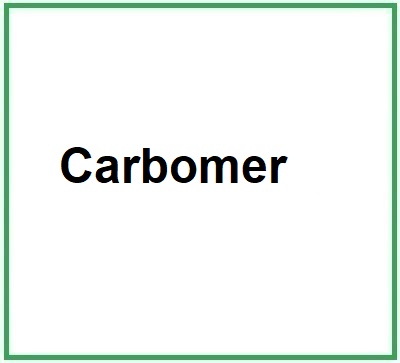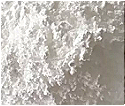BACKGROUND: Two studies of intranasal 0.5% carbomer 980 gel were conducted evaluating nasal tolerability in healthy volunteers and safety and efficacy in adults with common cold symptoms. CONCLUSION: While 0.5% carbomer 980 gel nasal spray demonstrated good local nasal tolerability in healthy volunteers, the spray did not significantly impact the course of infection or resolution of cold symptoms in subjects with common cold (1).
The present investigation reports the evaluation of potential use of Carbomer gel bearing methotrexate loaded nanostructured lipid carriers for topical application of methotrexate for possible therapy of psoriasis in comparison to solid lipid nanoparticles. These were evaluated for various parameters such as particle size, surface charge, entrapment efficiency, shape and surface morphology, thermal analysis, in-vitro drug release through skin (Franz diffusion cell) and drug deposition study, fluorescence microscopy, particle-skin interaction study, skin-irritation testing and storage stability. The formulation (NLC5) showed the best entrapment efficiency (62.72 ± 0.94%) while SLN showed only 26.84 ± 0.64% with particle size of 221 ± 14nm and 212 ± 11nm, respectively. Skin permeation study of MTX loaded SLN and NLC5 hydrogels showed prolonged drug release up to 24 h. The skin drug deposition study showed the greatest deposition of drug enriched NLC5 hydrogel (28.8%) when compared to plain drug enriched hydrogel (11.4%) and drug enriched SLN hydrogel (18.6%). Fluorescence microscopy suggested the localization effect of these lipid based systems to deeper skin region. The primary skin irritation studies indicated that MTX loaded SLN or NLC5 hydrogels resulted no erythema. It can be concluded that NLC represents a promising particulate carrier having prolonged drug release, improved skin permeation (2).
OBJECTIVE: To evaluate the survival of atraumatic restorative treatment (ART) restorations using high viscosity glass ionomer cement (GIC), compomer (COM), and glass carbomer (CAR) for occlusal and occlusoproximal cavitated dentin caries lesions in primary molars. CONCLUSIONS: GIC and compomer are clinically more successful than CAR for occlusal and occlusoproximal restorations in primary molars. CLINICAL SIGNIFICANCE: Both compomer and high viscosity glass ionomer cement are suitable materials for ART in primary molars. However, glass carbomer cement should not be used for ART (#NCT02217098) (3).
References___________________________________
(1) Safety and Efficacy of 0.5% Carbomer 980 Gel for Treatment of Symptoms of Common Cold: Results of 2 Randomized Trials.
Dennie L.
Drugs R D. 2019 Apr 19. doi: 10.1007/s40268-019-0270-3.
(2) Carbomer gel bearing methotrexate loaded lipid nanocontainers shows improved topical delivery intended for effective management of psoriasis.
Tripathi P, Kumar A, Jain PK, Patel JR.
Int J Biol Macromol. 2018 Dec;120(Pt A):1322-1334. doi: 10.1016/j.ijbiomac.2018.08.136. Epub 2018 Aug 29
(3) Glass carbomer and compomer for ART restorations: 3-year results of a randomized clinical trial.
Olegário IC, Hesse D, Mendes FM, Bonifácio CC, Raggio DP.
Clin Oral Investig. 2019 Apr;23(4):1761-1770. doi: 10.1007/s00784-018-2593-9. Epub 2018 Aug 31.
![]() Carbomer
Carbomer 


